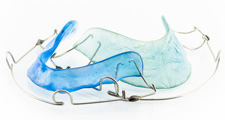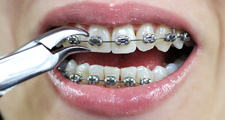
History of Orthodontics
Attempts to correct the irregular positioning of teeth date back to 1000 B.C. The first texts to methodically explain orthodontics, not appearing until 1850 A.D., describe procedures performed by Dr. Norman Kingsley to remedy protruding teeth. In the 1890s, the "father of modern orthodontics," Dr. Edward Angle, highlighted the issue of occlusion (the way in which natural teeth come together in a bite). The publication of Angle's Classification of Malocclusion divided malocclusion into three classes and defined the notion of normal occlusion in terms of natural dentition (type, number and arrangement of the natural teeth).
Allowing orthodontists to see how facial bones affected malocclusion, cephalometric radiographs developed in the 1940s led to the revelation that malocclusion could be prevented by the redirection of bone growth. Further development in surgical techniques in the 1970s permitted oral surgeons to treat bone-related causes of malocclusion in adults.
At present, orthodontists combine extraoral force, growth modification, surgery and extractions to improve occlusion, aesthetically enhance the smile and stabilize dental occlusion for the future.


